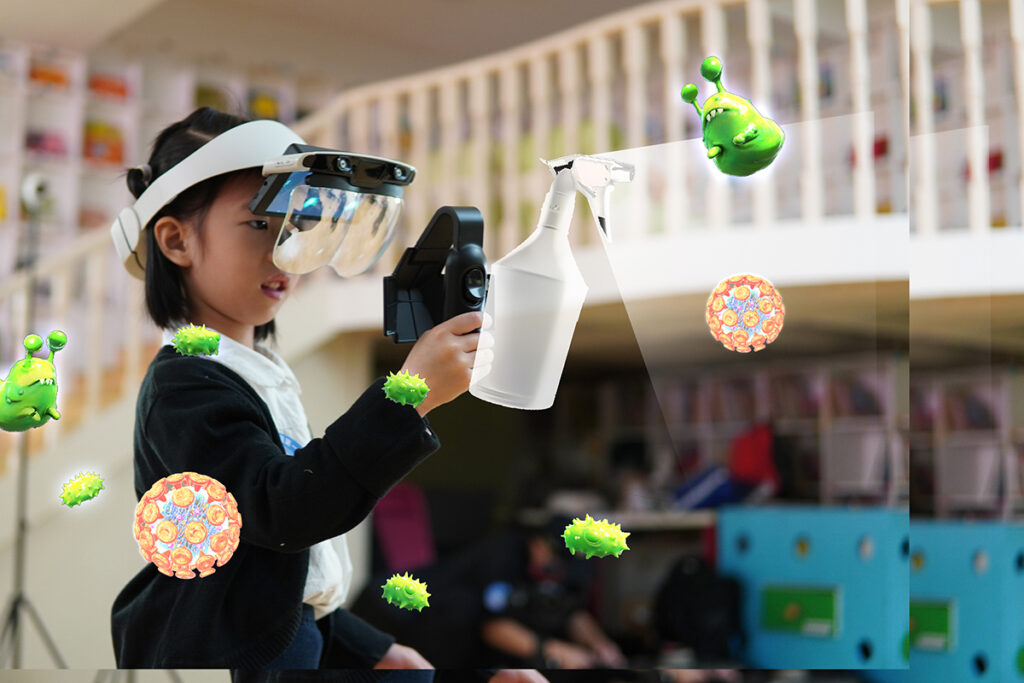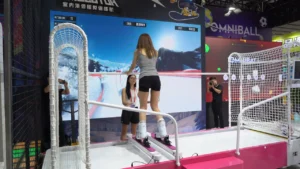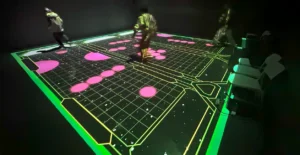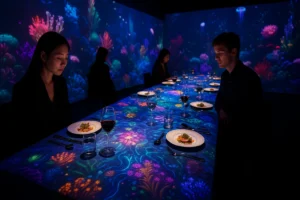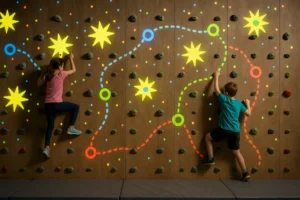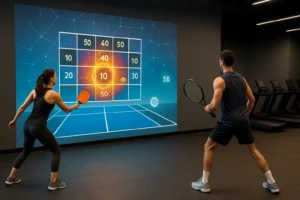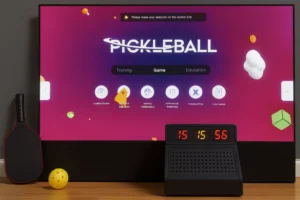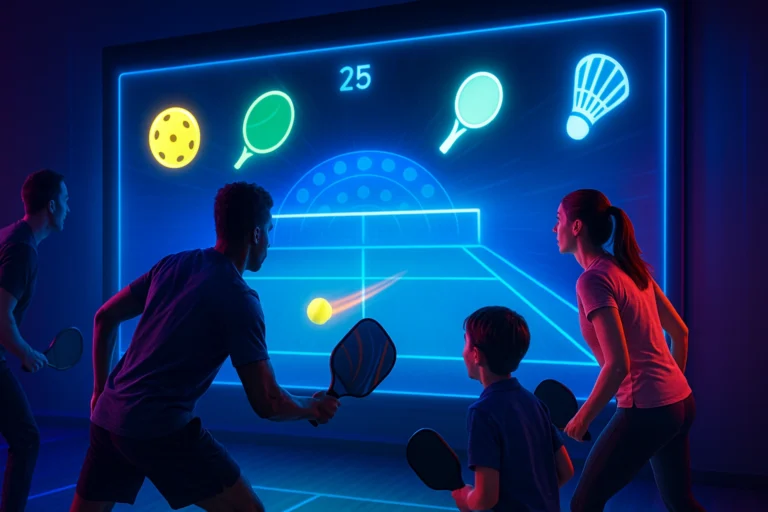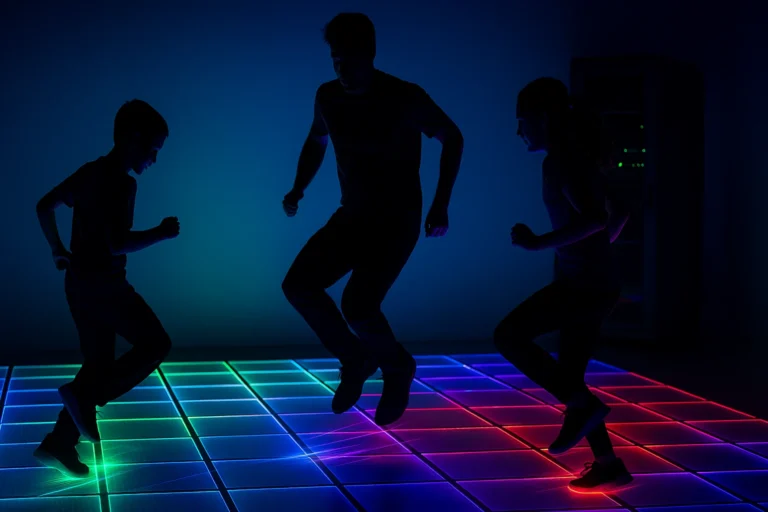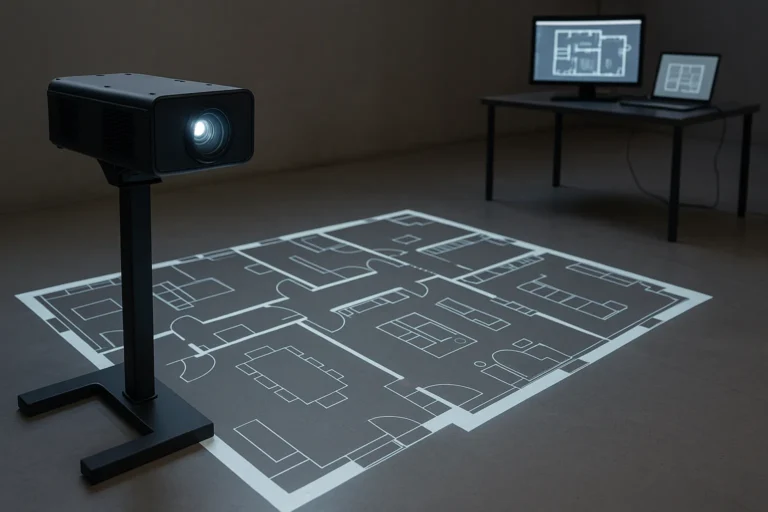Demystifying 3D Holographic Projection Technology
A 3D holographic projection display system utilizes a combination of hardware and software to generate and project light patterns that create the illusion of a three-dimensional object. Unlike traditional flat-panel displays, holographic projections can be viewed from various angles, further enhancing the sense of realism.
There are two main types of holographic projection systems:
- Pepper’s Ghost Illusion: This technique uses angled mirrors and transparent screens to create a 2D holographic effect. While not truly 3D, it offers a cost-effective solution for simpler applications.
- True Holography: This method employs lasers and diffraction gratings to project a full 3D image. It’s a more complex and expensive technology but delivers a more realistic and interactive experience.
Unlocking the Potential: Applications of 3D Holographic Projection Screens
The potential applications of 3D holographic projection screens are vast and extend across various industries:
- Education: Imagine students learning about anatomy by interacting with a holographic model of the human body. Holographic displays can revolutionize education by making complex concepts more engaging and interactive.
- Entertainment: The gaming industry is already experimenting with holographic technology to create more immersive gaming experiences. Imagine playing chess against a holographic opponent or exploring a virtual world projected into your living room.
- Retail: Businesses can showcase products in a more captivating way using holographic displays. Customers can examine items in 3D from all angles, enhancing the shopping experience.
- Medicine: Surgeons can use holographic representations of patients’ organs to plan complex procedures more effectively. Holographic displays can also be used for medical training, allowing students to practice on virtual patients.
- Communication: Imagine holding a meeting where participants from different locations can interact with each other as holograms in a shared virtual space. Holographic communication can revolutionize remote collaboration.
DIY 3D Holographic Projection Display Film: Exploring Feasibility
While some companies offer pre-built holographic projection systems, the technology is still in its early stages. There is a growing interest in DIY solutions, particularly 3D holographic projection film. This film is a special material that can be used to create a holographic effect when paired with a projector and light source.
However, creating a high-quality holographic display using DIY methods can be challenging. The film itself might be readily available, but the supporting hardware and software needed for optimal performance can be complex and expensive. Additionally, achieving a true 3D effect requires precise alignment and calibration, making it a project best suited for experienced hobbyists.
The Rise of Personalized Holographic Projector Systems: A Glimpse into the Future
Looking ahead, the future of holographic technology lies in personalized and user-friendly systems. Imagine a system that can project customized holograms directly from your smartphone or computer. This would open up a world of possibilities, from displaying personalized greetings to creating interactive learning experiences.
Several companies are already developing such systems, and as the technology matures, we can expect to see a wider range of user-friendly holographic projectors available for purchase.

3D Holographic Projector Film Technology Solution: What Materials are Needed?
The materials needed for a DIY 3D holographic projector film setup can vary depending on the desired outcome. However, some general components include:
- Holographic Projection Film: This is the specialized film that creates the holographic effect. The quality of the film significantly impacts the final projection.
- Projector: A high-resolution projector with a powerful light source is necessary to project the image onto the film.
- Light Source: A coherent light source, such as a laser, is often required for true holographic projections.
- Stand/Frame: A sturdy stand or frame is needed to hold the film in place.
- Calibration Tools: Depending on the complexity of the system, calibration tools might be required to achieve optimal image quality.
Here are some additional FAQs to quench your curiosity about 3D holographic displays:
The price of 3D holographic projectors varies widely depending on the size, resolution, and features. Basic units can start from a few hundred dollars, while high-end commercial systems can cost tens of thousands of dollars.
Several online retailers and specialty stores offer 3D holographic projectors. It’s important to research and compare features before making a purchase.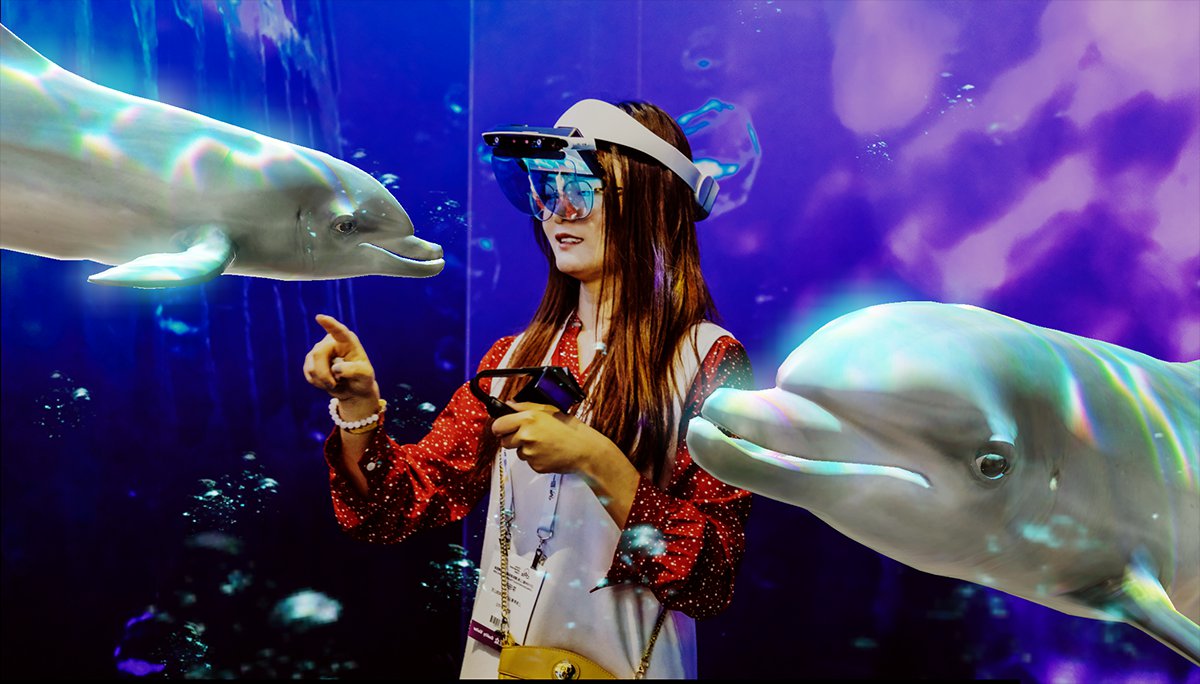
A holographic projector is a device that creates the holographic image, while a hologram is the three-dimensional image itself.

